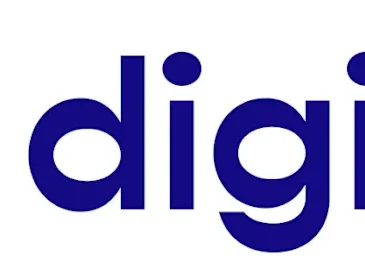
Public sector IT leaders face an unprecedented challenge: citizens demand commercial-like, cutting-edge digital experiences while organizations grapple with legacy systems, budget constraints and complex regulatory requirements. As we witness the emergence of Web4 — the Agentic Web — forward-thinking technology leaders have an opportunity to leapfrog traditional modernization approaches and deliver transformative public services.
From static portals to intelligent services
The evolution of web technology mirrors the transformation of public sector and overall digital services. Web 1.0 gave us basic government websites with downloadable forms and static information — a digital filing cabinet. Web 2.0 introduced citizen portals and online transactions, allowing residents to renew licenses and pay taxes online.
Web3 promised transparency and trust through distributed-ledger databases, immutable records and decentralized identity management. While Web3 technologies show promise for government transparency and secure record-keeping, adoption remains limited due to complexity and technical debt.
Web3’s architecture centers on distributed consensus mechanisms and smart contracts, delivering value through tamper-proof records, transparent transactions and reduced intermediary costs. For government applications, this translates to enhanced audit trails, reduced fraud and improved citizen trust in digital processes.
Web4: Intelligent government services
Web4 represents a paradigm shift from providing access to information toward providing intelligent services that understand citizen needs and execute complex workflows autonomously. Instead of navigating multiple departments and forms, users interact with intelligent agents that coordinate across public sector entities to deliver results holistically.
Consider a small business owner seeking permits for a new restaurant. Today, this requires navigating separate websites across a myriad of levels of government for health department approvals, building permits, fire safety inspections and business licenses. In the Agentic Web, the owner would simply state their intent: “I want to open a restaurant at 123 Main Street.” Then, the intelligent system coordinates all necessary approvals across all layers of government, schedules inspections and provides real-time status updates throughout the process.
The public sector agentic architecture
Web4 in government consists of five integrated layers designed for public sector requirements:
1. The citizen service agent layer. Intelligent agents serve as dedicated case workers for each citizen interaction. These agents maintain comprehensive understanding of regulatory requirements, inter-agency dependencies and individual citizen circumstances. Unlike traditional chatbots, they persist across interactions and learn from each case to improve service delivery.
2. The natural intent interface. Citizens interact using plain language rather than navigating complex government taxonomy. “My unemployment benefits stopped and I don’t know why” triggers a comprehensive investigation across multiple systems, checking payment status, eligibility requirements and potential data discrepancies — all without requiring citizens to understand bureaucratic processes or agency information flows.
3. The inter-agency orchestration layer. This layer manages coordination between departments, agencies and external enterprises. When a citizen needs services spanning multiple agencies — such as disaster relief involving the Federal Emergency Management Agency (FEMA), state emergency management, local services and nonprofit partners — the orchestration layer ensures seamless collaboration while maintaining appropriate data sharing protocols.
4. The legacy system integration framework. Most government agencies operate on decades-old systems that cannot be easily replaced. This layer provides intelligent interfaces to legacy databases and applications, allowing modern agentic services to access and update information in existing systems.
5. The compliance and security foundation. Public sector operations demand rigorous security, privacy protection and regulatory compliance. This foundational layer ensures all agent actions maintain audit trails, respect privacy regulations, comply with accessibility requirements and operate within defined authorization boundaries.
Transformative applications across public sector
Government services. Municipal governments can deploy agents that automatically process routine requests like pothole reports, noise complaints, or tree removal requests. Citizens report issues through multiple channels — voice, text, mobile apps — while agents coordinate with appropriate departments, schedule services and provide proactive updates.
State agencies can use agentic systems to streamline benefits administration, automatically determining eligibility across multiple programs and coordinating enrollment. This reduces administrative overhead while ensuring citizens receive all benefits they qualify for.
Educational institutions. Universities and school districts can implement intelligent student services that coordinate financial aid, course registration, housing and support services. A student simply states their academic goals and the system creates personalized degree plans while identifying relevant scholarships and support programs.
K-12 systems can use agentic technology to coordinate special education services, automatically scheduling required assessments and ensuring compliance with individualized education programs across multiple providers. Researchers can also automate and streamline tasks across the research lifecycle, from scanning databases and verifying originality to checking ethical standards and analyzing papers, ultimately reducing workload and reviewer fatigue.
Healthcare providers. Public health departments can deploy agents that coordinate patient care across multiple providers, ensuring continuity when patients move between emergency rooms, specialists and primary care providers. These systems can automatically identify care gaps and proactively schedule necessary screenings or treatments.
During health emergencies, agentic systems can coordinate resource allocation, contact tracing and public communication while maintaining patient privacy and regulatory compliance.
Nonprofit organizations. Social service organizations can use intelligent agents to coordinate case management across multiple agencies. When a family needs assistance, the system can simultaneously assess eligibility for housing assistance, food programs, healthcare enrollment and employment services, creating coordinated support plans that address root causes rather than symptoms.
Implementation strategy for public sector technology leaders
The path to Web4 implementation requires strategic planning that addresses unique public sector constraints. Start with pilot programs in high-volume, routine service areas where automation can immediately improve citizen experience and reduce staff workload.
Focus on creating agent-enabled interfaces to existing systems rather than attempting wholesale replacement. This approach delivers immediate value while building foundations for more comprehensive transformation.
Prioritize transparency and explainability in agent decision-making. Citizens and elected officials need to understand how decisions are reached, requiring careful attention to algorithmic accountability and bias prevention.
Establish clear governance frameworks that define agent authority levels, escalation procedures and human oversight requirements. Public sector applications demand higher reliability and accountability than commercial implementations.
The competitive advantage of early adoption
Public sector organizations that embrace agentic architecture will deliver dramatically improved citizen experiences while reducing operational costs. More importantly, they’ll position themselves as innovation leaders, attracting top talent and federal funding opportunities increasingly focused on digital transformation.
The technology exists today to begin this transformation. The question facing public sector technology leaders is not whether agentic systems will transform government services, but whether their organizations will lead or follow this inevitable evolution.
Citizens deserve government services that work as intuitively as their favorite consumer applications. Web4 provides the architectural foundation to make that vision reality.
Dominic Delmolino is Vice President, Worldwide Public Sector Technology & Innovation at Amazon Web Services.




